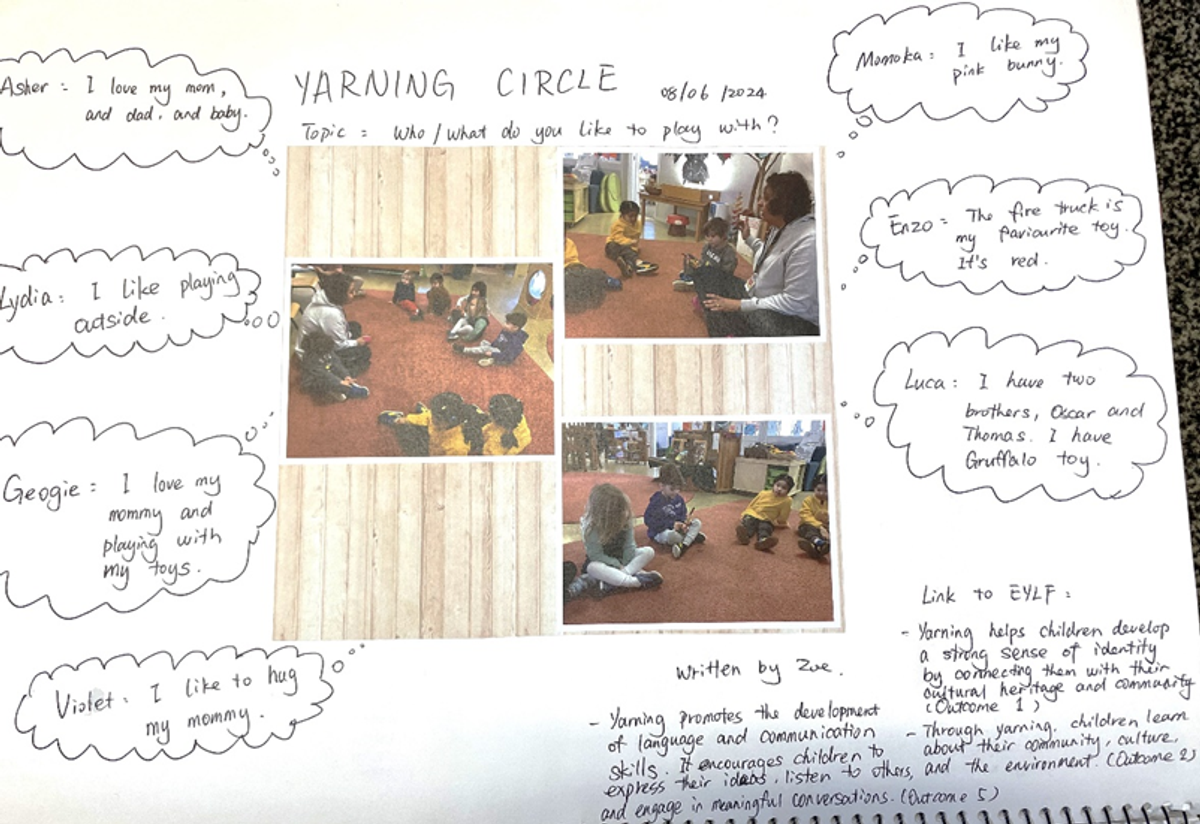Glen Education Bentleigh

The power of the child’s voice.
By Leila Baghaei , Early Childhood Teacher
Listening to and valuing children’s perspectives is not just a matter of respect; it is a crucial component of effective teaching and learning.
When children feel heard and their opinions are valued, they are more engaged, motivated, and invested in their learning. This approach also fosters a sense of belonging and helps build their confidence and self-esteem.
The United Nations Convention on the Rights of the Child, which is prominently displayed in Bentleigh Kindergarten, emphasises this right. Specifically:
- Article 12: Respect for Children’s Views
Children have the right to express their views on matters that affect them. It is essential that these views are listened to and taken seriously by adults. - Article 13: Sharing Thoughts Freely
Children have the right to freely share their thoughts and ideas through various forms, including talking, drawing, and writing, as long as it does not harm others.
How we incorporate Children’s Opinions in Learning.
Documenting Children’s Ideas: Effective documentation methods are key to capturing and reflecting on children’s thoughts and ideas. Tools such as mind maps, floor books, and individual journals can be invaluable in this process. For example, in our recent project on community helpers, we used a floor book to record children’s suggestions and questions. This documentation not only helped us plan subsequent activities but also provided a visible record of their contributions and interests.
Mind Maps: These visual tools help to organize and represent children’s ideas on a specific topic. We pose a question and then document the level of understanding. For example, in a recent project on science week, we created a mind map based on children’s understanding about science, “What is science?” and our positive affirmations we created after learning about mindset.
Floor Books: These interactive resources are used to document children’s contributions during group discussions. During our environmental conservation unit, children shared their ideas about recycling and sustainability, which we recorded in a floor book. This not only documented their input but also facilitated ongoing discussions and reflections.
Journals and Drawings: We use these tools to gauge individual progress and interests, tailoring our activities to support and extend their learning. During our recent learning program about Olympic games, after exploring different sports using different media, we encouraged children to draw their favourite sports logo, which provide us reflective way that children could express their thoughts and understandings.
Engaging in Meaningful Projects: When we incorporate children’s ideas into our projects, the learning experience becomes more relevant and engaging for them. For instance, during a recent unit on environmental conservation, we started by asking the children what they knew and cared about regarding the environment. Their responses guided our activities, leading to a project where they created posters about recycling and sustainability. This approach made the learning experience more meaningful and allowed them to take ownership of their learning.
Assessing and Supporting Learning: Children’s insights into their own learning can provide valuable information for assessment and support. By engaging in regular conversations and reflections with the children, we gain a better understanding of their knowledge, skills, and areas needing further development. For example, through one-on-one discussions, we discovered that many children were interested in exploring different cultures. This feedback led us to integrate multicultural activities into our curriculum, supporting their curiosity and broadening their perspectives.
Promoting a Culture of Listening
Creating a culture where children’s voices are actively heard requires intentional effort and practice. Here are some strategies we use to promote this culture in our classrooms:
- Encourage Open Communication: Create an environment where children feel comfortable sharing their thoughts and ideas. This can be achieved through regular group discussions, individual reflections, and creative expression.
- Model Active Listening: Demonstrate active listening by giving children your full attention when they speak, asking follow-up questions, and showing genuine interest in their ideas.
A group of children sitting on the floor encourage open communication as well as practicing active listening in our daily Yarning Circle.
- Incorporate Feedback into Planning: Use the feedback and ideas shared by children to inform and shape your teaching practices and curriculum planning. This not only makes the learning experience more relevant but also shows children that their opinions have a tangible impact.
- Celebrate Contributions: Recognize and celebrate the contributions of children in various ways, whether through showcasing their work, acknowledging their ideas in group settings, or incorporating their suggestions into daily activities.
Children are contributing in making decisions “Voting” what they would like to make in our special person’s day.
Listening to and valuing children’s thoughts and opinions is a powerful way to enhance their learning experiences and foster a supportive and engaging educational environment.
At Glen Bentleigh Kindergarten we work together to create a learning environment where every child’s voice is heard and valued.



